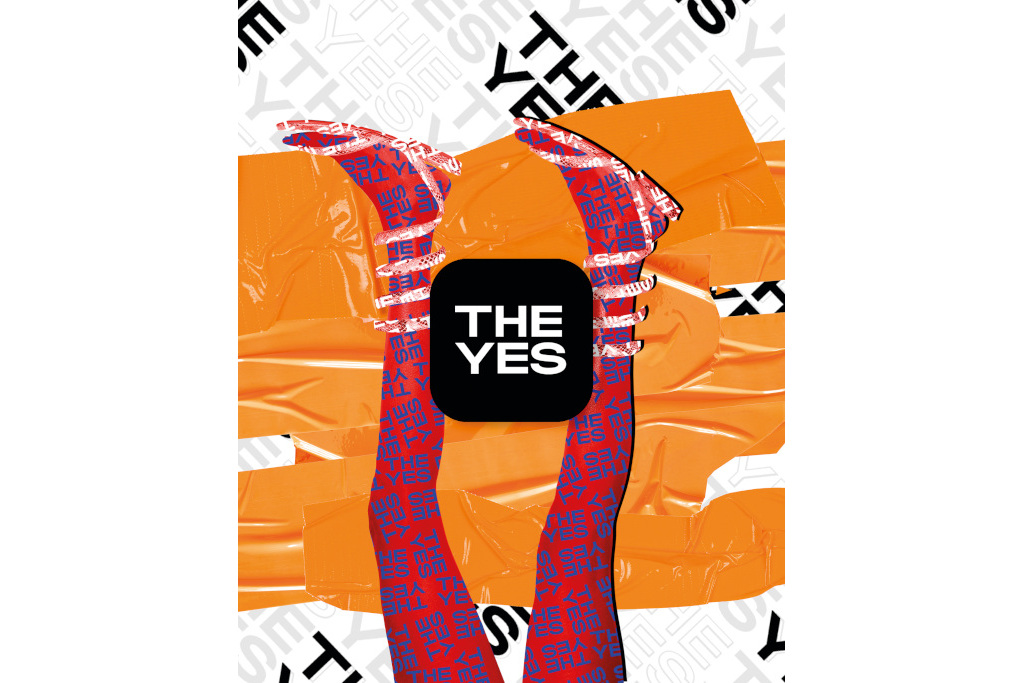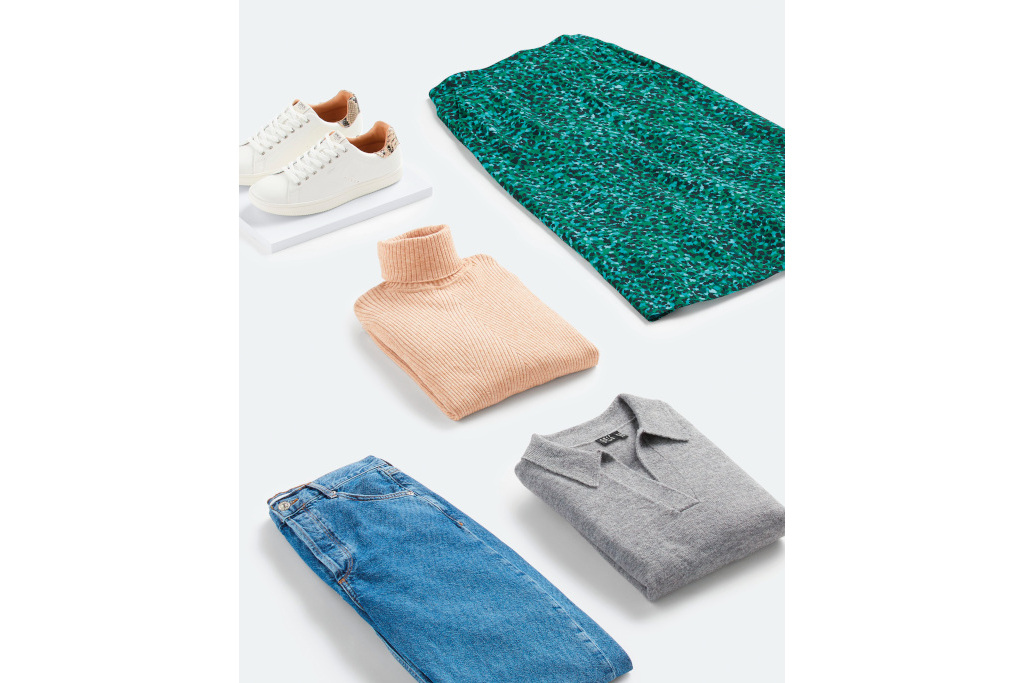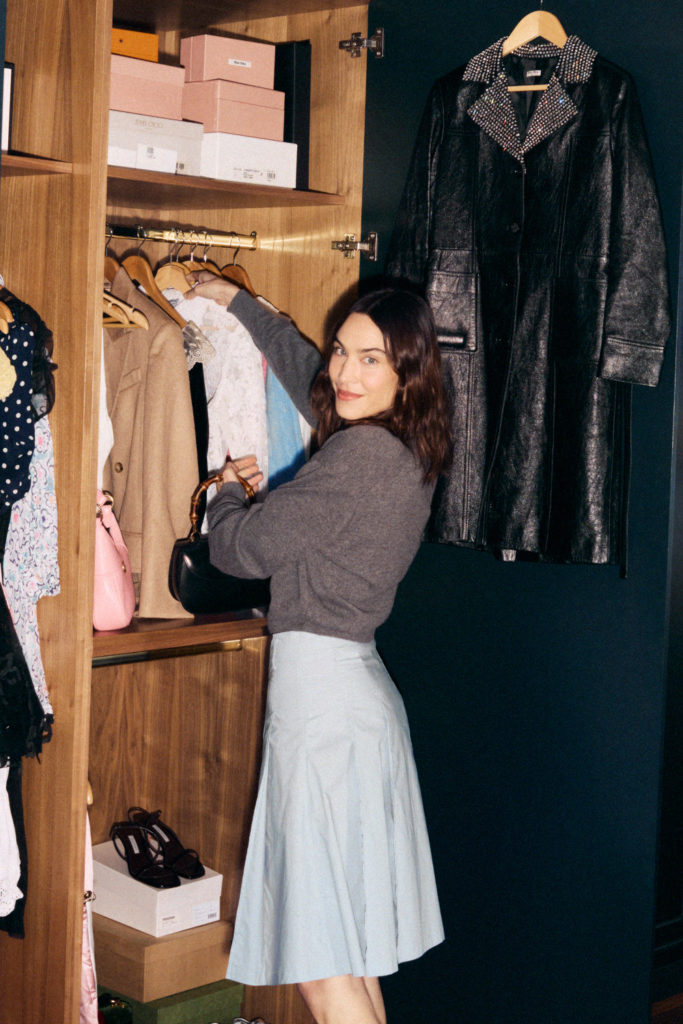The Future’s Here (And It’s All About AI)
By
3 years ago
AI systems aren’t about ex machina humanoids

As Artificial Intelligence becomes ever more integral to our lives, brands must embrace it or be left behind. The good news is that it can be used it as both a tool for sustainability and increased profits, argues Tabitha Goldstaub.
Buy a copy of Great British Brands 2022 here
The Future’s Here (And It’s All About AI)
At first glance, Artificial Intelligence (AI) and luxury brands might seem unlikely bedfellows. Supposing I made it a threesome with climate change? Would any of them stay for breakfast? It’s not inconceivable. AI technology (if used responsibly) is continually proving its power to achieve positive change in all areas of our lives. And while the luxury industry is already embracing sustainability initiatives, I believe there’s huge scope for carbon footprint reduction if they listen to the siren call of AI. The truly seductive aspect of AI for luxury brands is that it will also increase profitability.
Definitions of AI are constantly being tweaked and refined, but in the broadest sense it refers to technologies that strive to recreate human intelligence within machines. This may well sound like the stuff of sci-fi dreams and multi-million-dollar robot films, but today’s AI systems aren’t ex machina humanoids. They have narrower capabilities, able to perform only singular tasks. But if you’ve used a photo filter to see what you’d look like with pink hair or been guided (or bitterly disappointed) by Netflix’s viewing recommendations; if Google Maps has helped you avoid traffic, or Instagram seems to know what you want to buy before you do, then you’re already interacting with AI.
We’re living in an era in which machines are taught to learn and adapt and there are infinite possibilities to their applications, especially if we mix and match different AI technologies. What AI is, and where it’s going, is ultimately shaped by people. I find this hugely exciting and my own journey into AI policy started with a desire to help it be harnessed for good. What greater good could there be than helping in the fight against climate change?
AI is already automating everyday tasks at an unprecedented pace, but it is not a magic balm. It comes with risks, as well as rewards, and we have a duty to understand both sides of the coin. According to Jupiter research, global spending on AI by the fashion and luxury industries is predicted to reach $7.3 billion annually from 2022. And it’s not just about funny apps and sci-fi robots: AI is receiving massive investment because it can be used to reduce costs and increase profits. Many companies are already using AI tools to perfect design, personalise a product or shopping experience, connect bricks and mortar with online worlds, find new customers and chat with them in real time. And this is just the start. If it sounds like the dream to business owners, that’s because it is.
So what is the flip side of all this progress? When we receive beautiful, special or unique items, the luxury industry brings us great pleasure, but in doing so it is also damaging the planet. Half a million tons of nonbiodegradable microfibres have already entered the world’s oceans; textile dyeing is second to agriculture in polluting water, and the fashion industry is responsible for ten per cent of carbon emissions globally.
Now that we know what harm some production methods have wreaked on the environment, many consumers are more conscious in choosing where they spend their money. Yes, they want luxury, but not at any cost. They are looking for ways to minimise the impact their spending has on the planet.
As a cohort, millennials and Gen Z are leading the battle against climate change. The first generations to be taught about climate change in schools, they have grown into a defined consumer group and are extremely conscious about the impact of their spending. But spend they will.
According to Bain & Company, the under-25s are set to account for 40 per cent of the global personal luxury goods market by 2035, and in the next four years will contribute 130 per cent of market growth. If this group is to be won over, a greater shift towards value-driven spending must be implemented – and fast.

THE YES pulls products from retailer websites and shows them in a feed in their own app. Over time it will learn its users’ likes through machine learning.
In the McKinsey State of Fashion Report published last year, it was documented that nine out of ten Gen Z consumers believe brands should demonstrate transparency around their environmental and social policies and 73 per cent would pay more for sustainable items. How can we achieve this? Let’s begin by looking at the demand to reduce waste. Hundreds of thousands of tons of wearable clothing find their forever homes in UK landfills each year. Roughly speaking, that’s the equivalent of £140m worth of stock. The impact on the environment is horrendous, as well as being a totally unnecessary waste for the companies manufacturing those products.
AI technologies can step in here to help eliminate excess inventory as well as boost production for more popular items. This happens through machine learning, which can process the huge amounts of real-time data needed to discover which products in their line are clickbait, and which have the highest purchase rate at any given time. Access to these figures can speed up the supply chain process so resources can be sent to the most profitable places. This also works in reverse, reducing the overproduction of less popular items that end up in landfill. Online and offline stores can benefit in tandem by using the same data to adjust stock needs.
This same data can also be used for trend forecasting, aiding the design team by anticipating which styles will become hero products. Getting this right at design level results in a positive return on investment in AI technologies as it minimises potential overstock, streamlines production, optimises turnover and generates relevant sales.
This isn’t just the stuff of the future. Brands like Stitch Fix and THE YES are already ahead of the game. By harnessing data directly from users, they have fast, easy access to information that helps them plan styles their customers will love and calculate manufacturing quantities, as well as improve customers’ online shopping experience.
THE YES pulls items of clothing from brands’ and retailers’ websites and shows them in a feed within their own app. If users like the item being shown, they tap ‘yes’. If not, they tap ‘no’. Over time, the app will learn its user likes with the help of AI and machine learning. THE YES already counts Prada, Ralph Lauren and J.Crew among its clients.
AI technologies can also help reduce the historically labour-intensive aspect of garment production and support the human workforce. This can increase accuracy as well as take pressure off workers, freeing up their time to focus on value addition, as opposed to routine and often mundane tasks. When it comes to distribution, Yoox Net-a-Porter Group (YNAP) and Amazon are already using software-controlled robots to navigate their giant warehouses, picking and transporting inventory faster and more accurately than humans, and enabling services like same-day delivery.
Although the technology is currently in its infancy, AI-powered image recognition can also be used to detect errors or anomalies in fabrics. SoftWear Automation, an Atlanta-based robotics firm focused on sewn product manufacturing, uses automated, high-speed photography to take pictures of garments as robots work on them. The images are interpreted in real time by software that in turn directs the robots’ movements according to how the fabric stretches, and allows for adjustments to be made.

TrueFit helps online shoppers find clothes that fit; Stitchfix uses AI to learn what their users really like, which helps them plan new styles and know what quantities to manufacture.
One of my favourite ideas for reducing carbon footprint is to use AI to find the perfect fit, thereby reducing returns – as well as being incredibly handy for the customer. I imagine it’s everyone’s dream to see what clothes, watches and jewellery look like on their bodies before hitting the ‘buy now’ button. Product returns cost UK retailers around £60bn a year and can account for up to ten per cent of business, with the carbon footprint of unnecessary deliveries and returns negatively impacting the planet. The technology doesn’t exist in its entirety yet, but if there was funding for AI to generate digital twins of our bodies, we could potentially eliminate those mistakes.
Indeed, with people unable to go out and buy – or even try on – clothes during the pandemic, the technology needed for virtual fitting rooms has accelerated. Companies like TrueFit already use behind-the-scenes data to help their customers find the perfect bra fit, and Virtusize helps brands build in virtual sizing tools to increase customer satisfaction and reduce returns. Israel-based Zeekit has used its AI to allow brands, including ASOS, Macy’s and Adidas, to hold virtual photoshoots. Here the AI is able to map clothes onto people’s bodies – these can either be models or potential customers who upload their own photos to an app.
The future of luxury goods lies with consumers who are looking for brands they can trust to abide by sustainable, conscious policies and help in the fight against climate change. Of course, they’re also looking for a personalised experience that offers high quality goods at the touch of a button. It may sound a tall order but brands can achieve it by embracing and investing in AI technologies.
Luxury brands are perfectly positioned to maximise how AI works for them, just as automotive and electronic industries have done. Now’s the time to tap into this new power, not only to economise, but also to deliver better products, better customer experience and reduced impact on the planet.
Start by asking yourself: ‘What have I always wished I could automate?’ Watch some sci-fi, let yourself dream and then start researching the practicals, such as the data you need and the people you’ll want on this journey. Ultimately, it’s about daring to think big and partnering with innovators who can help bring your dreams to life.
Featured image: Shutterstock



